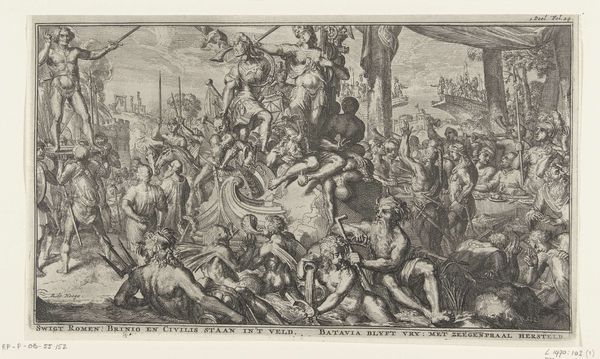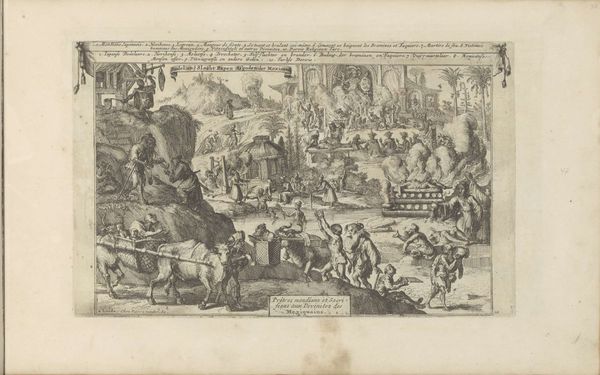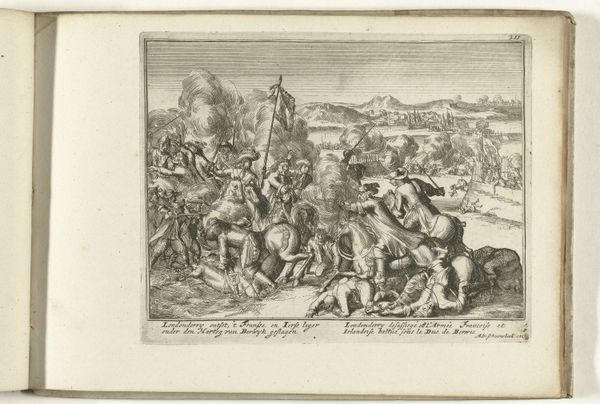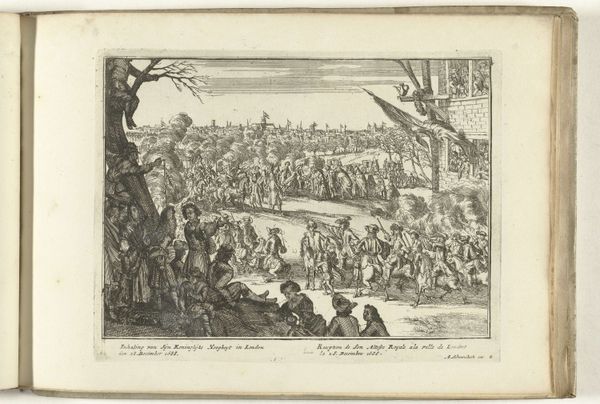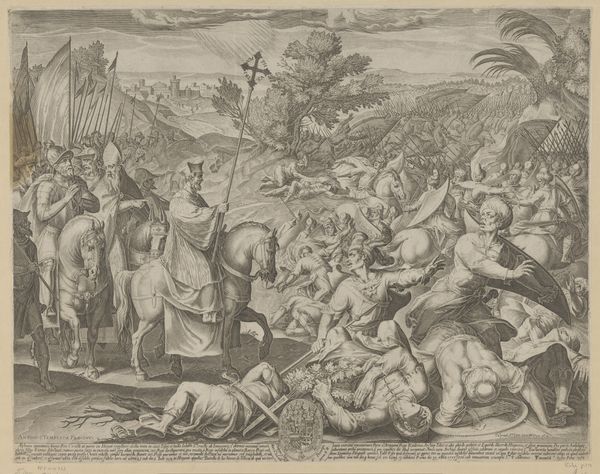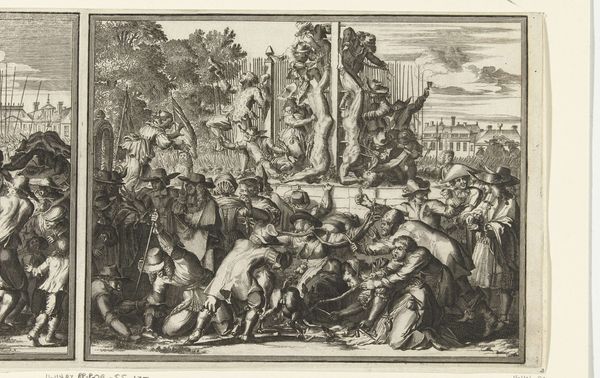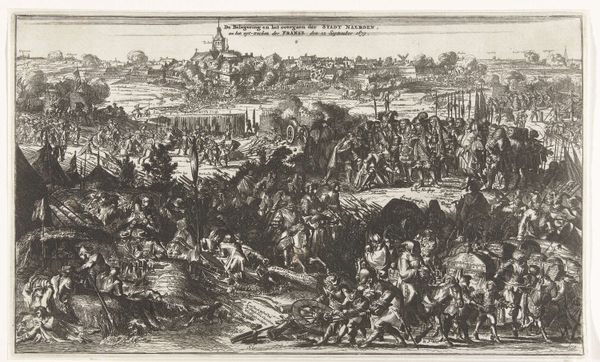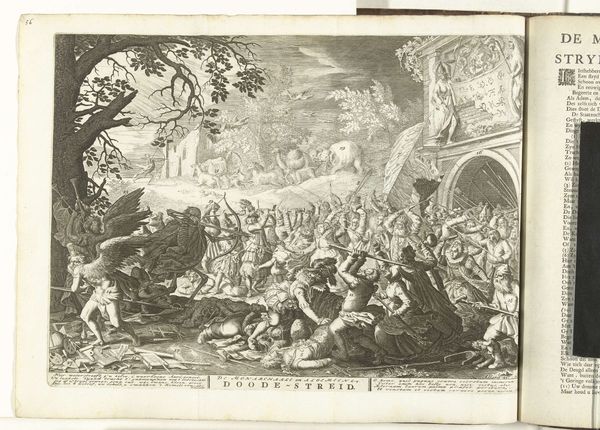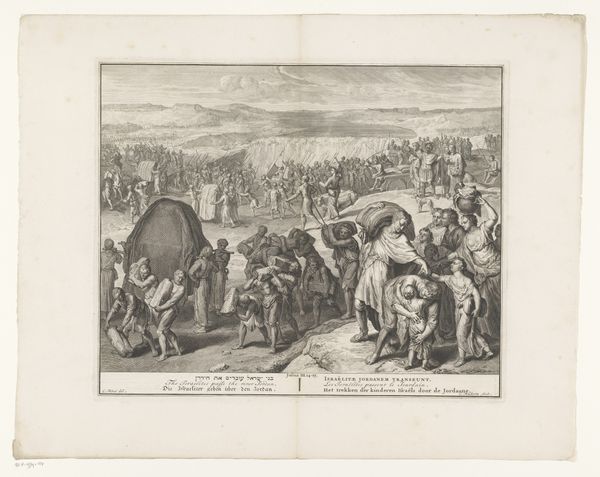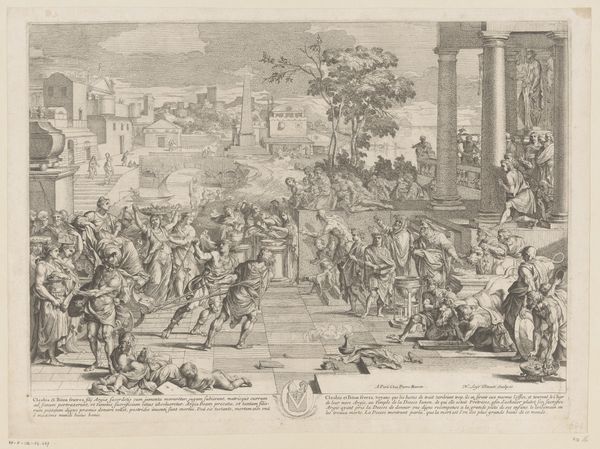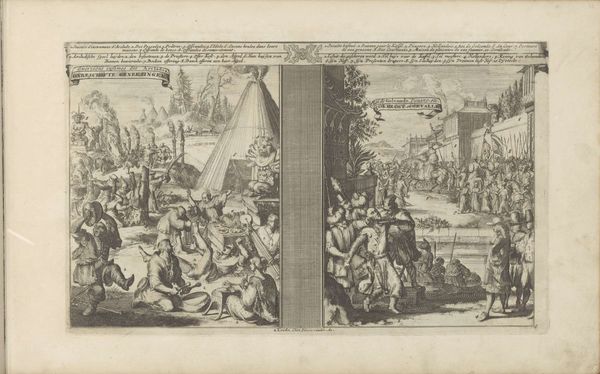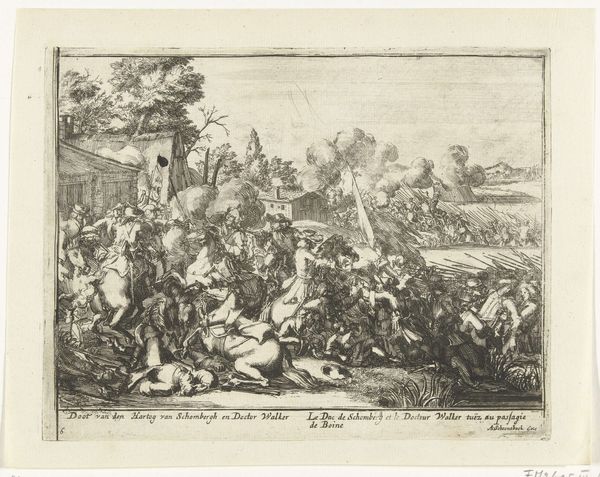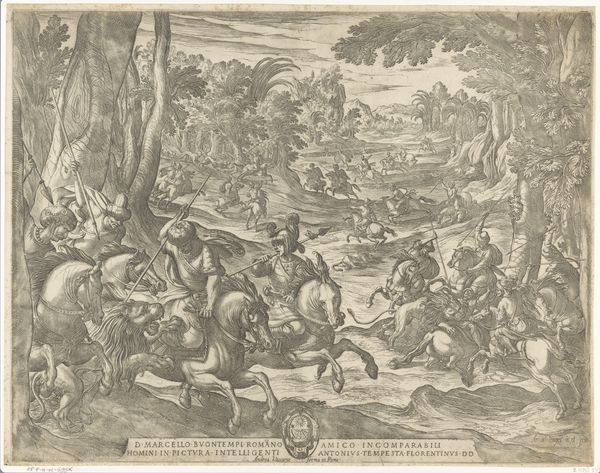
print, engraving
#
narrative-art
#
baroque
# print
#
history-painting
#
engraving
Dimensions: height 213 mm, width 301 mm
Copyright: Rijks Museum: Open Domain
Curator: At first glance, I see chaos—a frenetic energy in the etched lines, even violence in the stark contrasts of light and shadow. Editor: And chaos is what Romeyn de Hooghe intended. This engraving, made sometime between 1682 and 1733, is titled "Spaanse wreedheden in West-Indië," or "Spanish atrocities in the West Indies." It is on display here at the Rijksmuseum. It’s crucial to remember that this image isn't neutral; it's a potent piece of political propaganda. Curator: Propaganda, yes, absolutely. Looking at the materiality—the dense network of etched lines creating this scene—I'm drawn to the labor involved in its creation. Each line meticulously placed to evoke maximum emotional impact. What was the purpose of disseminating these prints, what class consumed them, and to what effect? Editor: It speaks directly to the anti-Spanish sentiment pervasive at the time, leveraging the visual language of cruelty to demonize colonial powers. The historical context here is key; it coincided with a period of intense Dutch-Spanish rivalry. It reinforced a particular narrative positioning the Dutch Republic as morally superior, especially in regard to how resources and human life were treated in colonial exploits. Curator: It’s a study in contrasts – from the meticulously rendered detail of the figures to the rough, almost haphazard depiction of the landscape. We see the labor of both the colonizers and the colonized, highlighting the exploitation inherent in colonial structures. This piece really implicates those structures. Editor: And this act of indictment—essential when viewed through an intersectional lens—forces us to confront questions of race, power, and representation, and how those images affect and reflect back on contemporary culture and power imbalances. It compels us to reflect critically on whose stories are told, and who benefits. Curator: Indeed. As a manufactured object distributed at the time, it acted as both art object and consumable item. To me, it also reveals how potent materials like ink and paper could be manipulated as potent instruments. Editor: Examining its lasting impact asks us to engage thoughtfully in current political dialogues. After all, the ethics surrounding these power structures remains vital and relevant, wouldn't you say? Curator: Yes. Looking closely, it’s evident that "Spaanse wreedheden in West-Indië" invites more than just historical contemplation, it compels active, current self reflection.
Comments
No comments
Be the first to comment and join the conversation on the ultimate creative platform.
